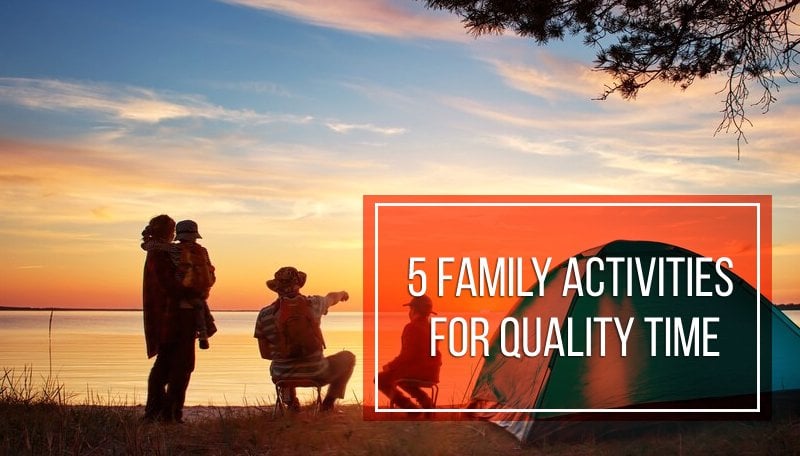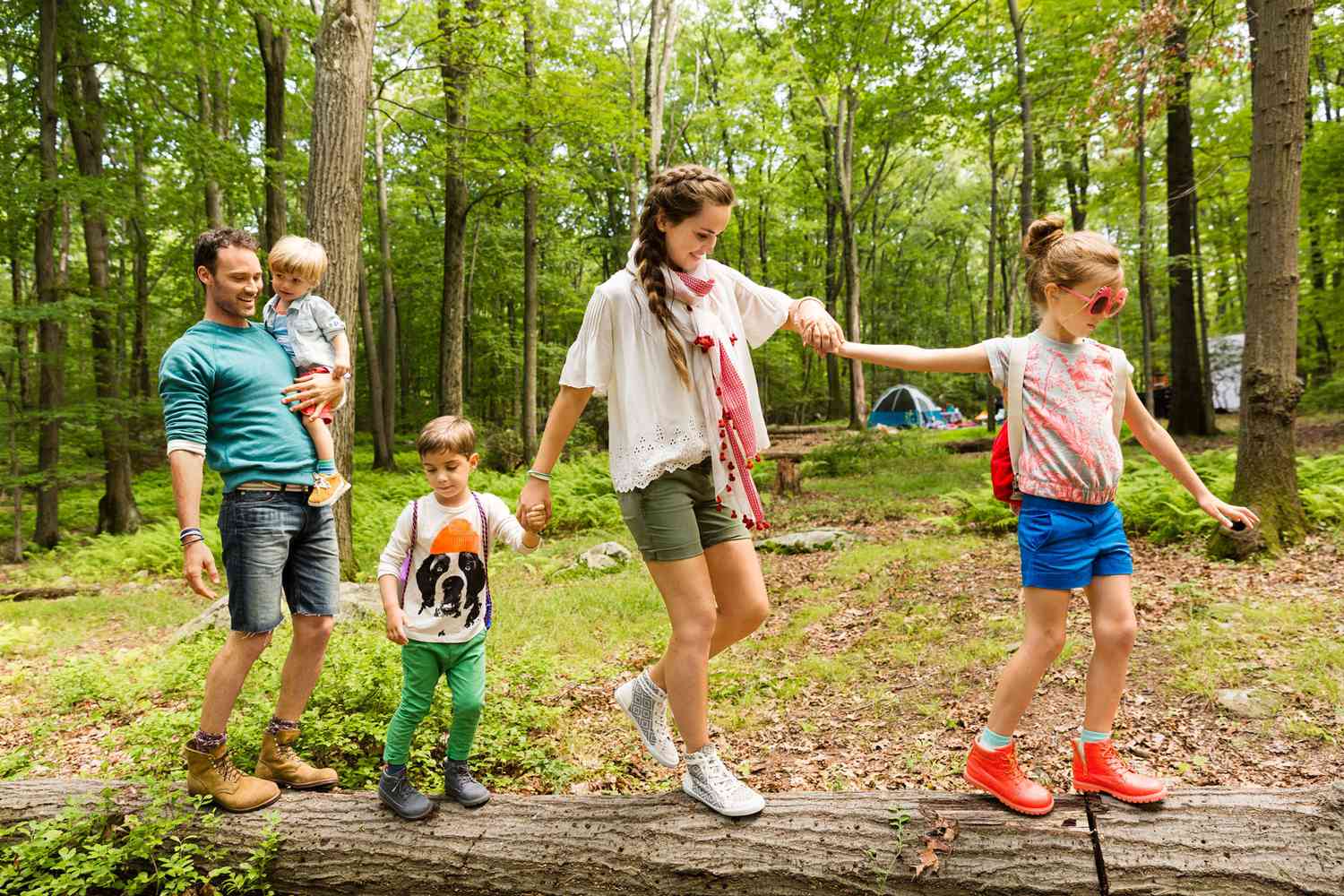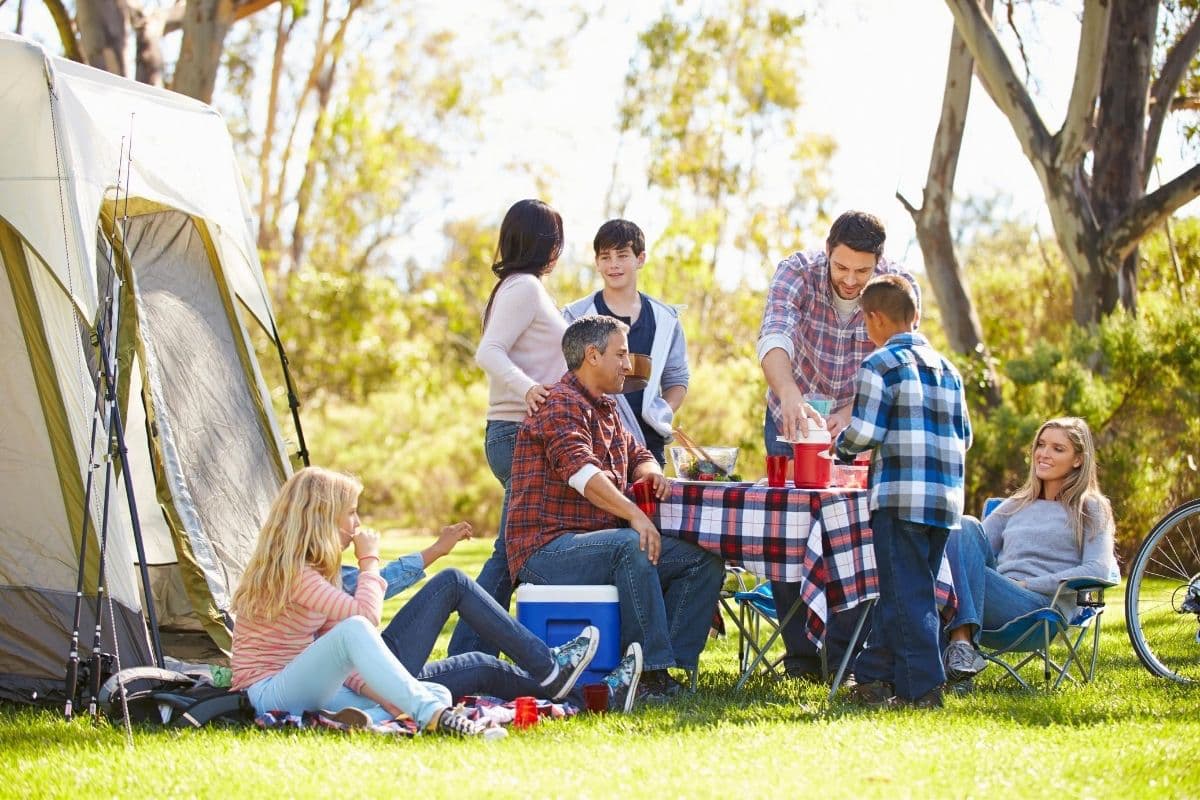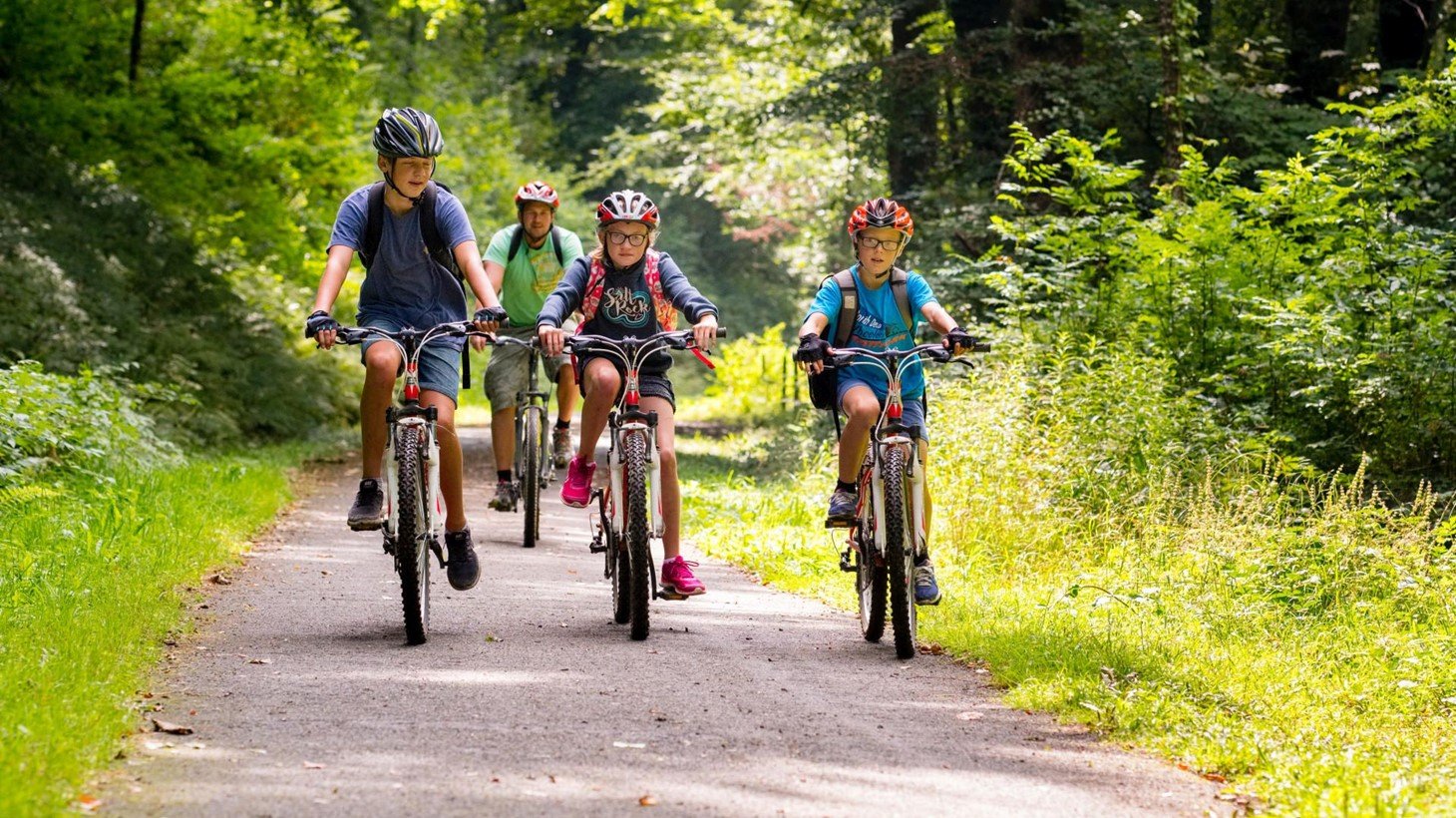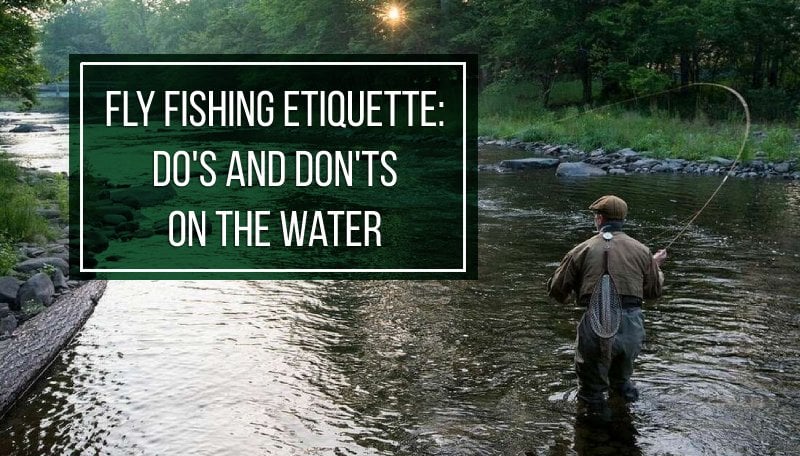Last Updated on
Memories are one of those things in our lives you can’t put a price tag on simply because they are never for sale. Among the miscellaneous collection of personal experiences, memories that include our nearest and dearest tend to be the ones we treasure the most. They may take some time to reveal their true value, but once it shows, every single memory pearl begins shining ever so brightly. Spending quality time with your family is one of the primary means to acquire those lasting memories, and family activities are the best form of it. Whether it’s a weekend camping trip or a game of catching in the backyard, getting outside and enjoying nature together can be a great way to bolster your relationships and create special moments that will stay with you for the rest of your days.
In this article, we’ll discuss five activities that can take you and your family outside to bond: hiking, camping, playing sports together, visiting local parks or beaches, and volunteering. Each activity provides unique opportunities for everyone in the family to connect while exploring the outdoors and staying active.
Table of Contents
Hiking
Camping
Doing Sports
Visiting Parks and Beaches
Volunteering
Conclusion
FAQs
Activity 1: Hiking
Hiking is one of the few opportunities we have to get away from bustling city life and rediscover the ties we have to nature. Doing so with your family will also present opportunities for everyone to learn a bit more about one another. Since hiking only requires walking for an extended period of time, it can be enjoyed by more age groups, providing a unique bonding experience for everyone involved. Hiking together as a family can help kids learn about the environment, discover new plants and animals and instill appreciation for the natural world.
Hiking is not as strenuous as some other physical activities, but it exposes children to certain challenges. Young children don’t have the capacity to overcome long distances and get fatigued quicker than adults. For that reason, it’s important to choose a trail that is appropriate for everyone’s skill level. The American Hiking Society suggests that parents should encourage young children to participate in both choosing and finding routes and determining pace. Make sure you have plenty of water and energy-rich snacks on hand, as well as supplies like sunscreen or bug spray. Be sure to dress appropriately for the weather conditions and wear comfortable shoes, suitable for walking on uneven terrain. And always keep an eye on your children.
To make your hike even more enjoyable, consider incorporating some learning activities into your adventure. You can pack binoculars or magnifying glasses so kids can observe birds and insects up close. You can also get field guides for children to identify different plants or animals they come across during their journey. Or, if your child is really passionate about picking things up, you can ask them to find certain items like rocks or leaves of different colors or shapes and collect them.
Overall, hiking with family is an excellent way to spend quality time together while getting some exercise in the process. You can take it at your own pace and dedicate as much time to all the activities as you wish. With careful planning and preparation, you’ll get an unforgettable outdoor experience that will be cherished by all the participants for years to come.
Activity 2: Camping
Camping is a more demanding activity than hiking, but it can also be more rewarding. As many a movie has shown, a camping trip can bring the family together and endow everyone with memories they will never forget. Camping can be a great bonding exercise for families, allowing them to reconnect with one another through shared experiences. In this isolated runaway trip, there will be close to no disturbance to your interactions.
When selecting a campsite, it is important to consider the size of your family and the type of camping you will be doing. If you are planning on car camping, look for sites that have easy access to your vehicle and plenty of space for all of your camping gear. If you are backpacking, make sure to select a campsite that is close enough to where you plan on hiking so that you don’t have too far of a walk back at night.
There are guides and articles dedicated solely to camping equipment lists. They are much more comprehensive than what we are going to provide, so we recommend you give at least one of those a read. The usual list of camping gear includes tents, sleeping bags, flashlights, first aid kits, food and water. Depending on the type of camping you will be doing, other items such as cooking supplies or fishing gear may also be necessary. There are also loads of camping accessories, beyond anything we can count. They can also be indispensable for bringing more comfort to your camping trip.
As with hiking, it is very important to let your child feel involved in the preparation and arrangement processes. Let them pack their own gear using the list you’ve created, but make sure to double-check it before setting off. Ask them what they would want to eat and keep ready-to-go snacks close. Practice tent-setting at home so that they can contribute to the process on the site.
While camping itself is quite an entertaining activity, there are many other fun things you can do in the process. If there are lakes or rivers nearby, you can go swimming or fishing. If the site is developed, there can be boat rentals and bike trails. You can take hikes around the area and play games like frisbee or catch. And of course, one simply cannot do without the campfire scene, with stories to tell and marshmallows to roast. The memories of family activities like that won’t be easily forgotten.
Activity 3: Doing Sports Together
Family sports events are always memorable, even if the experiences everyone has are not necessarily the same. There are many different types of sports that are suitable for families, both team and individual. Be it basketball, soccer, swimming, skiing, cycling, or even running – all options are great. Each of them provides an opportunity to keep fit while also having fun with your family.
Playing team sports and individual sports as a family offer experiences different in several ways. Team sports require all members of the family to work together in order to achieve a common goal. Two scenarios can happen here. In the first one, members of one family are divided into groups. As such, the element of competitiveness between family members is inevitable, but it is not necessarily bad. If the competition is friendly, all members will leave the field with joyful memories, regardless of who wins. In the second scenario, you play one family vs. another. The bonding in such cases is ever more potent, but the game loses the trait of being your-family-exclusive. Individual sports allow each participant to shine on their own without feeling dependent on anyone else’s performance. At the same time, you do sports together, so the unifying moment is still present.
To make playing sports as a family more enjoyable, it’s important to set realistic goals and expectations. Unless you are dead set on training a future Olympic champion, the fun should remain a priority. Focus on enjoying yourself and learning new skills together. It’s also important to remember that not everyone will enjoy the same type of sport; so it may be necessary to try out different activities until you find one that works for everyone in the family.
Doing sports together can become a treasured family tradition. For example, getting out for a skiing holiday can remain a thing even after your children grow up. Some people may discover a passion for a particular sport this way. And even if it never goes beyond being a once-in-a-while thing, it is still worth a shot.
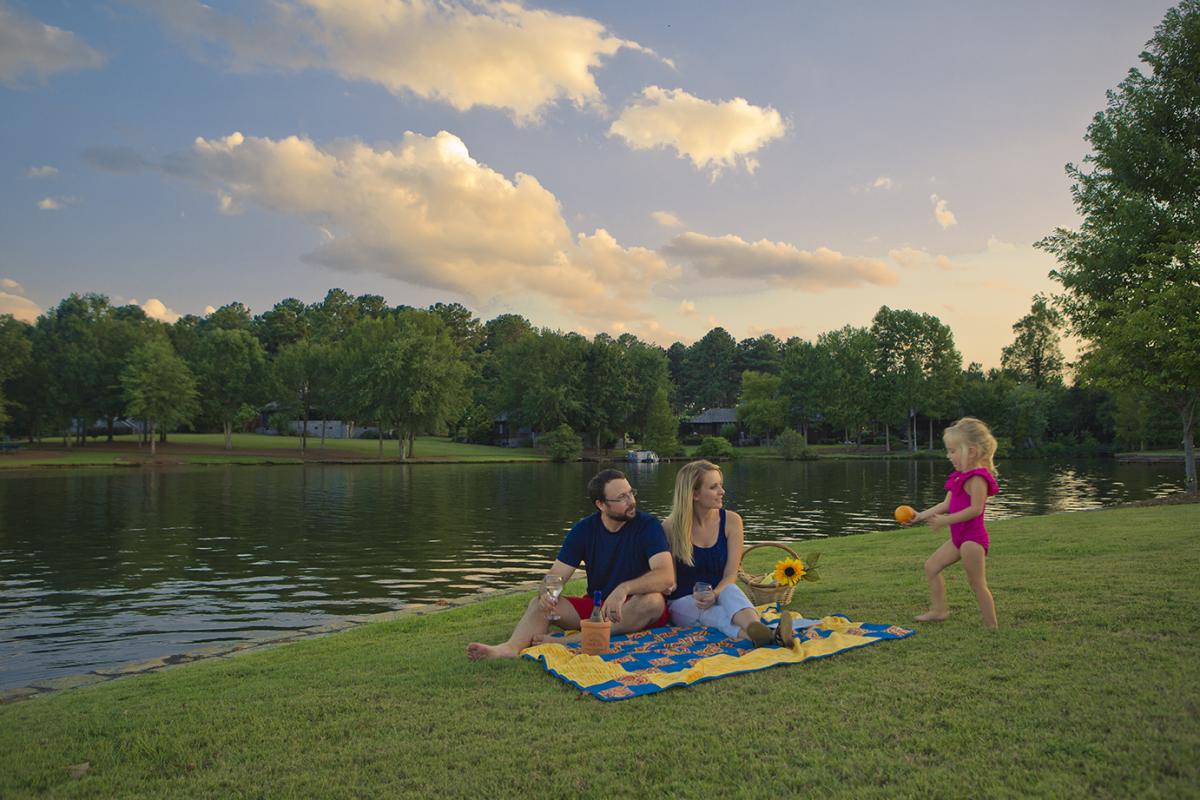
Activity 4: Visiting Local Parks or Beaches
Visiting parks and beaches as a family is a great way to get out of the house and explore nature without placing a strain on everybody. It’s an inexpensive way to breathe some fresh air and acquaint your children with local sites.
Choosing the park or beach location for your family outing is somewhat of a no-lose situation. While there are parks and beaches more well-equipped and thus more pleasant to walk around, it is still all about getting out. You can research any amenities that may be available at the park or beach such as picnic tables or playgrounds. If it’s a park you plan to visit, check out if it has any rare plants or trees around. Thus you can mix pleasure with learning.
If it’s not the tranquility of a walk in the park you are after, there are plenty of fun activities and games you can play instead. You can pack sports equipment like frisbees, balls, or rackets as they don’t take up much space. Or pack a picnic lunch and enjoy some peaceful quality time together outdoors (and fight the ants’ attempts to snatch away your food together, how many family activities can boast that?).
Activity 5: Doing Volunteer Work Outdoors Together
Volunteering with your family is a great way to bond and make a positive impact on your community. It can be an incredibly rewarding experience, as you get to spend time with your nearest and dearest while making a difference in the world.
If you’re interested in doing outdoor volunteer work with your family, start by researching organizations in your area that offer volunteer opportunities for kids and adults alike. There are many different types of outdoor volunteer work that families can do together. For example, you could help out at a local food bank or animal shelter, plant trees for conservation efforts or pick up trash on the sides of the roads. The options are beyond count: you can help your local community, people in need, animals or plant life, so choose something you and your child might be genuinely interested in. Once you’ve found some potential options, contact the organization directly to learn more about their requirements and how you can get involved. With some activities, however, you can simply set off on a good-doing trip without checking in with anyone.
No matter what type of outdoor volunteer work you choose to do, there are many benefits to volunteering as a family. It’s an excellent way to teach kids about giving back and helping those in need. It also helps build empathy and understanding – and both of those qualities do deserve acquiring.
Conclusion
As you can see, there are quite a number of family activities that can take you and your closest ones outside. To be honest, it doesn’t really matter what you do. The company is the most precious thing about such activities. Every one of them can create opportunities to get to know each other from a different perspective. You teach children tenacity, endurance, teamwork, individualism, the ability to enjoy the moment and the importance of giving, learning a few things yourself in the process. If this article moved you to get your family out, please, leave a comment upon your return. We look forward to hearing your stories of the outdoors.
FAQs
What are some good outdoor family activities?
Hiking, biking, camping, fishing, kayaking, and visiting local parks or beaches are all terrific family activities that allow one to get outside and have some fun. If you’re looking for something a bit more structured, you could also consider organized sports like soccer or basketball. Doing volunteer work is also an excellent way to make the world a better place while spending time outdoors as a family.
How can I get my kids to enjoy being outdoors?
The things you can do depend heavily on your child’s age. Encourage them to explore and use their imaginations. Make a game out of finding shapes or patterns in nature if they find the observation process boring. You could also try gardening or bird watching together or heading to the beach for an afternoon of building sandcastles and playing in the waves. If your kids are into sports, you could consider organized activities like soccer or basketball. However, the outdoors might not be for everyone. Don’t push your child into doing something they tried and hardly enjoyed.
What are some tips for staying safe while enjoying the outdoors?
The suggestions depend heavily on what you do. Depending on the activity, you should plan ahead by researching the area and weather conditions. Bring plenty of water and snacks, plus any supplies that may be needed for your activity. Wear appropriate clothing including sunscreen and a hat and take along a first-aid kit and emergency contact information. Utilize proper safety gear such as life jackets or helmets if necessary. If you are traveling to a remote area, it’s a good idea to tell friends or family where you’ll be going. Don’t place your foot anywhere near areas that might be treacherous. Lastly, respect nature by following Leave No Trace guidelines so that others can also enjoy the outdoors responsibly.
How can I make outdoor family activities more affordable?
The best thing about the outdoors is that it’s free. Usually. Sometimes. If you want to spend as little as possible, research free-to-visit places in your area, such as hiking trails or city parks. Taking advantage of discounts or coupons for attractions is another good way to save money. You can also buy second-hand items. Frisbees are frisbees whether they are new or not.
